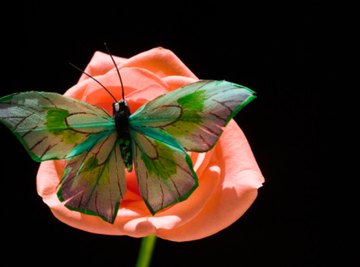
Plants, odd as it may seem on the surface, have more in common with everyday animals than with, say, other "alive but in the background" organisms such as bacteria. In fact, many bacteria and microorganisms are capable of locomotion (i.e., moving themselves around). Plants, as a rule, cannot move at all.
Plants, however, are eukaryotes, meaning that they belong to the classification domain Eukaryota; this category also includes animals, fungi and protists. As eukaryotes, plants engage in sexual reproduction and produce gametes (sex cells) through the process of cell division known as meiosis.
Plant Cells: Anatomy
Plant cells are eukaryotic cells, which means that in addition to the basic components all cells possess (DNA, a cell membrane, cytoplasm and ribosomes), they have a number of internal membrane-bound structures called organelles. Plant cells have many of the same organelles other eukaryotic cells do but also a few unique ones, notably chloroplasts.
The chloroplasts contain chlorophyll, a pigment that allows plants to make their own food in the form of glucose (since plants cannot eat). Plant cells also have cell walls, unlike animal cells. This means that when plant cells divide, they cannot undergo cytokinesis in quite the same way animal cells do. But as is the case with animals, certain parts of the plant produce specialized sex cells called gametes.
Parts of a Flower
It is important to consider that individual plants are "bisexual," that is, most plants have both "male" and "female" parts, situated apart from each other. Based on how a plant reproduced, this means that auto-pollination (i.e., self-reproduction) is not only likely but inevitable in some settings.
The male sex cell in a plant, or more specifically the part that bears pollen, is called a stamen and consists of an anther and a filament. The female part, which receives pollen grains, is called a pistil and includes an ovary (easy enough to remember, since human females have these as well), a stigma and a style.
Most people have heard of pollen, but for the most part, it is popularly recognized more as an allergen in human beings or a plaything of bees than as a contributor to genetic diversity in plants. "Which flower structure produces pollen?" is a question anyone curious about the reproductive cycle of plants is likely to ask at some point.
Mitosis and Meiosis: Overview
Recall that bacteria and other prokaryotes only reproduce asexually, by binary fission. This means that every bacterium, in the absence of chance DNA mutations, is genetically identical to its "parent" and any "children" it may have. Plants and other eukaryotes, however, go about things differently. While they can replenish everyday cells using the asexual process of mitosis, they also participate in sexual reproduction using meiosis.
By combining the genes of both parents in a random way, and by creating far more gametes than it needs from a wide range of mathematical possibilities, plants ensure that their offspring will show a range of different traits, with some of them likely to provide an occasional survival advantage even if by accident (e.g., by conferring chance genetic resistance to a certain environmental plant pathogen).
The Plant Life Cycle
Unlike animals, plants show an alternation of haploid and diploid generations. The haploid number is the number of distinct "kinds" of chromosomes you have, and the diploid number is the number all of your cells except gametes possess. (As it happens, you have a haploid number of 23, as you have chromosomes labeled 1 through 22, plus one sex chromosome (X or Y) from each parent. The human diploid number is thus 23.)
Pollen grains in plants are produced by the anther. The tip of the pistil collects pollen after it lands on the stigma, and then a pollen tube grows inside the ovary, where fertilization of the ovule occurs. There, a seed grows into a new plant.
References
About the Author
Kevin Beck holds a bachelor's degree in physics with minors in math and chemistry from the University of Vermont. Formerly with ScienceBlogs.com and the editor of "Run Strong," he has written for Runner's World, Men's Fitness, Competitor, and a variety of other publications. More about Kevin and links to his professional work can be found at www.kemibe.com.
Photo Credits
Jupiterimages/Goodshoot/Getty Images
